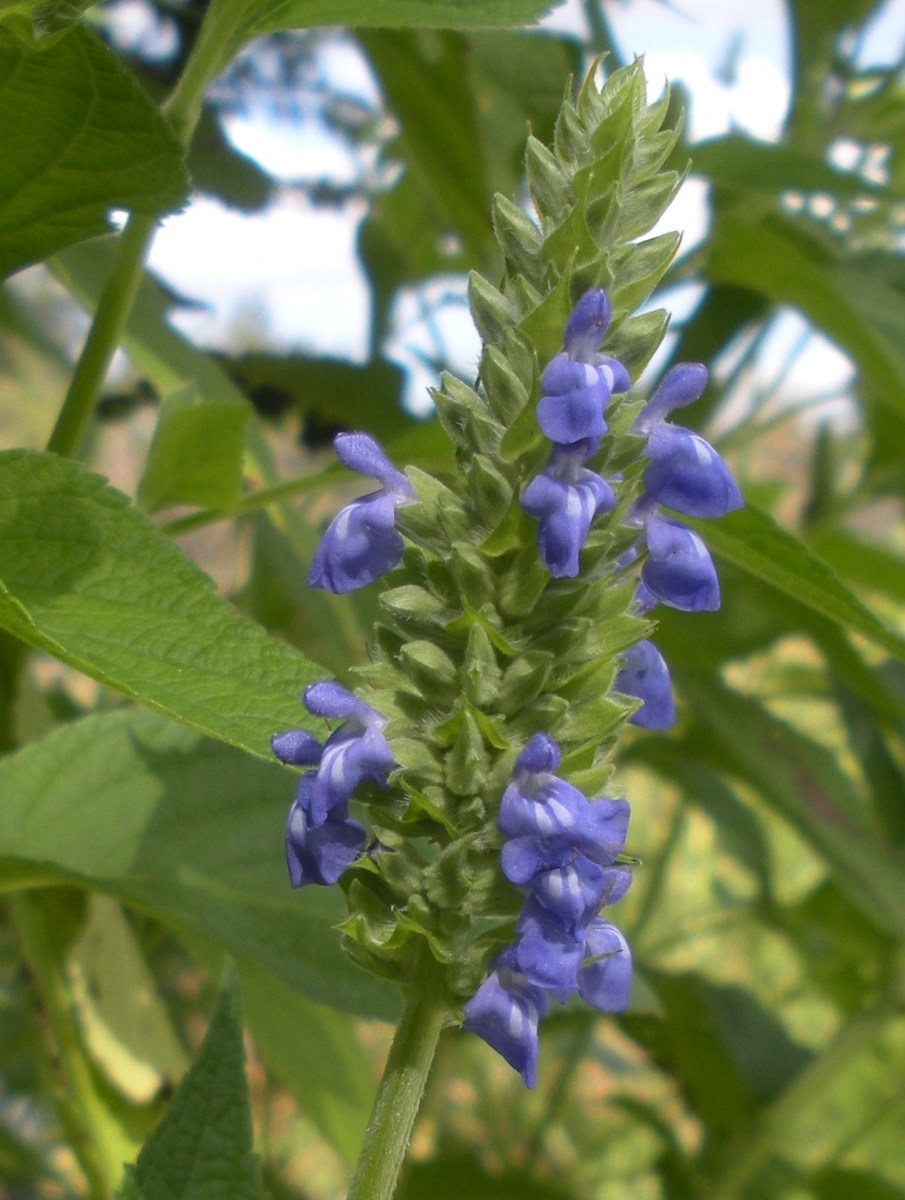
Chia
Salvia hispanica
Basic Information
🌿 Family: Lamiaceae🗺️ Zone: 9-12
Other Names:
- Salvia chia
- Salvia neohispanica
🌡️ Ideal Temperature : 60°F – 85°F
🔥 Heat Tolerance: Up to 100°F
❄️ Cold Tolerance: Down to 32°F
🌱 Type: Annual
Layers
- Herbaceous
Functions
- Edible
- Medicinal
- Pollinator
- Wildlife Attractor
- Mulcher
- Dynamic Accumulator
- Erosion Control
- Animal Fodder
- Border Plant
- Pest Management
- Biofuel
- Ground Cover
Pests
No pests associated with this plant.
Companions
- Beans
- Corn
- Squash
Plants to Avoid
- None
Description
Chia (Salvia hispanica) is an annual herbaceous plant native to central and southern Mexico and Guatemala. It typically grows up to 1 meter (3 feet) tall, featuring opposite lime-green leaves with serrated edges. The plant produces spikes of small blue, purple, or white flowers that are highly self-pollinating. Its tiny oval seeds, about 1 millimeter in diameter, are mottled in shades of brown, gray, black, and white. When soaked, these seeds form a mucilaginous gel.
🌞💧 Sun and Water Requirements:
Chia thrives in full sun and prefers well-drained soils. It is drought-tolerant once established but benefits from regular watering during germination and early growth stages.
✂️🫘 Methods to Propagate:
Propagation is primarily through seeds. Sow seeds directly into the soil after the last frost, ensuring they receive consistent moisture until germination.
🧑🌾👩🌾 When to Harvest:
Harvest occurs approximately 100 to 150 days after planting, once the flowers have dried and seeds are easily shaken free.
Purpose
- **Edible:** Chia seeds are rich in omega-3 fatty acids, fiber, and protein, making them a nutritious addition to diets.
- **Medicinal:** Traditionally used for their anti-inflammatory and antioxidant properties.
- **Pollinator:** The flowers attract bees and other pollinators, supporting biodiversity.
- **Wildlife Attractor:** Seeds and plants provide food for various wildlife species.
- **Mulcher:** Chia plants can be used as green mulch to improve soil health.
- **Dynamic Accumulator:** Accumulates nutrients, enhancing soil fertility.
- **Erosion Control:** The dense growth habit helps prevent soil erosion.
- **Animal Fodder:** Can serve as forage for livestock.
- **Border Plant:** Suitable for creating borders in gardens due to its manageable size.
- **Pest Management:** Emits essential oils that may repel certain insects.
- **Biofuel:** Potential source of biofuel due to its oil-rich seeds.
- **Ground Cover:** Provides effective ground cover, suppressing weeds and retaining soil moisture.